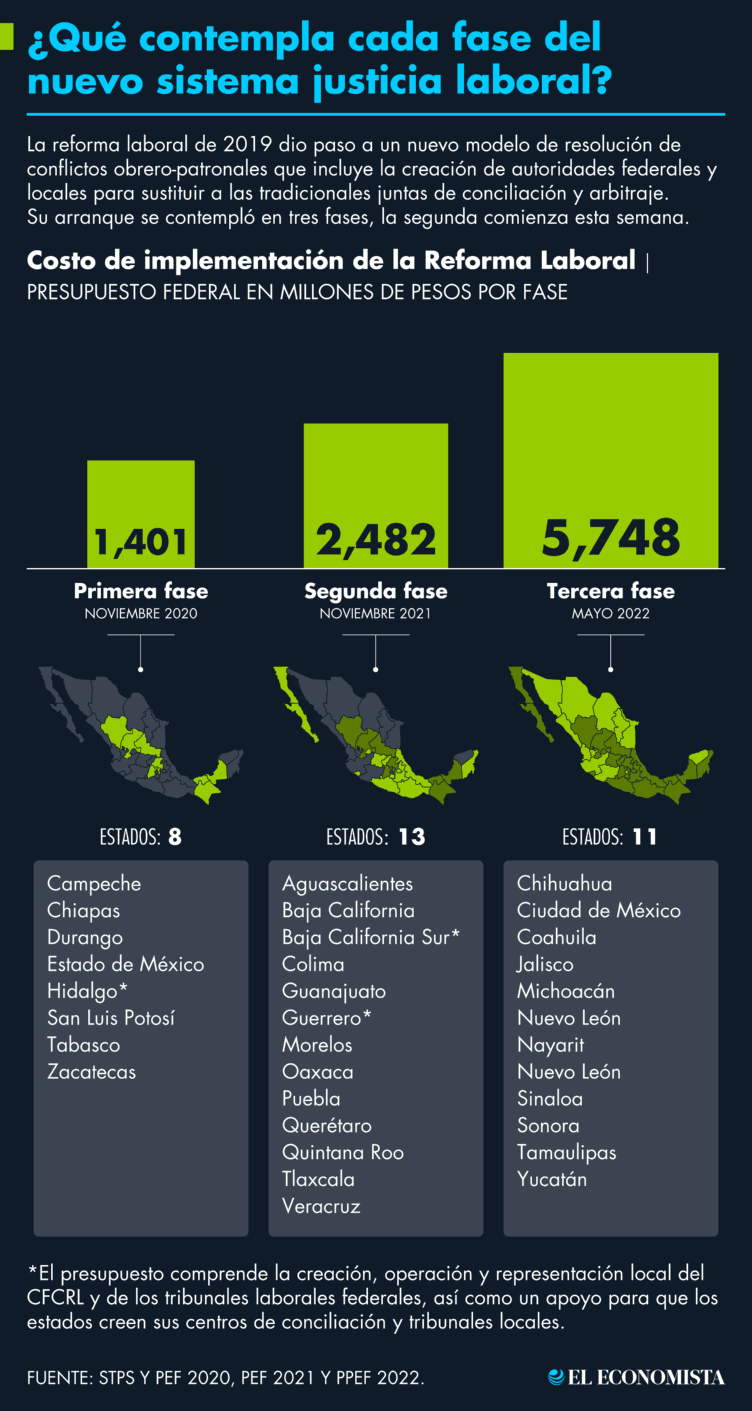The new labor justice It is already a reality in two-thirds of the national territory, there are 21 states that already have this conflict resolution mechanism that marks the end of long trials and seeks faster resolutions. In this sense, the process to be followed is different from that of the Conciliation and Arbitration Boards.
With the operation of the new labor authorities, including the Federal Conciliation Center and Labor Registry (CFCRL), local conciliation centers and labor courts in both jurisdictions, workers must exhaust the conciliation stage as a requirement to initiate a lawsuit.
The procedure is in this way because the objective of the new justice is to reach solutions in the first stage and avoid saturation of the labor courts. According to the Ministry of Labor and Social Security (STPS), 75% of individual matters of federal competence are being resolved through conciliation and 86% of these are resolved in less than 15 days.
In this sense, in this new stage, the workers of Campeche, Chiapas, Durango, State of Mexico, Hidalgo, San Luis Potosí, Tabasco, Zacatecas (first phase) and from Aguascalientes, Baja California, Baja California Sur, Colima, Guanajuato, Guerrero, Morelos, Oaxaca, Puebla, Querétaro, Quintana Roo, Tlaxcala and Veracruz (second level) must take into account in which cases they will go to a federal conciliation center or a local one to exhaust the conciliation stage.
Individuals must initiate their conciliation process at a CFCRL office when their employer belongs to one of the 22 federal industrial branches established in the Constitution:
- Textiles
- Electrical
- Cinematographic
- Hulera
- Sugar bowl
- Mining
- Metallurgy and iron and steel, covering the exploitation of basic minerals, the benefit and the smelting of the same, as well as the obtaining of metallic iron and steel in all its forms and leagues and their rolled products.
- Hydrocarbons
- Petrochemistry
- Cement
- Calera
- Automotive, including electrical auto parts
- Chemistry, also contemplating pharmaceuticals and medicines
- Pulp and paper
- Vegetable oils and fats
- Producer of food, covering exclusively the manufacture of those that are packaged, canned or packaged or that are intended for it.
- Manufacturer of beverages that are packaged or canned or that are intended for it.
- Railroad.
- Basic timber, which includes the production of sawmill and the manufacture of plywood or wood agglutinates.
- Stained glass, exclusively for the manufacture of flat, smooth or shaped glass, or glass containers.
- Tabacalera, which includes the benefit or manufacture of tobacco products.
- Banking and credit service
That is, if the conflict originated in a company with a business in any of these branches, the conciliation must be exhausted at the Federal Center for Conciliation and Labor Registration and if a solution is not reached, the trial will begin in a federal labor court.
In this vein, workers from the rest of the industrial branches should go to the local conciliation centersSome examples of the activities of this jurisdiction are activities in:
- Restaurants
- Hotels
- Self-service stores
- Private security
- Cleaning services
As in federal jurisdiction, if conciliation is not achieved, the issues will be settled in the labor courts locales.
In the Nnew model of labor justice, workers must also take into account that not all matters must go through conciliation, conflicts related to the denial of collective rights, acts of discrimination or harassment, social security benefits or forced labor, they can initiate a lawsuit directly in a court.

Reference-www.eleconomista.com.mx